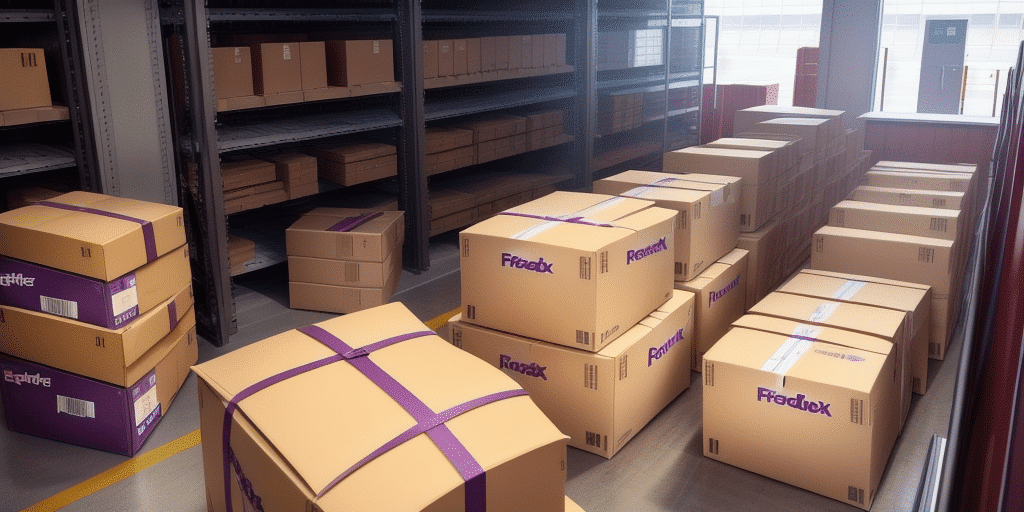Why Understanding Server Requirements for FedEx Ship Manager Matters
FedEx Ship Manager is a robust software solution designed to streamline your shipping operations by automating and managing shipping tasks efficiently. To harness its full potential, it's crucial to meet the software's server requirements. Failing to do so can lead to performance issues, system errors, and compatibility problems, ultimately disrupting your shipping processes.
One essential requirement is a stable internet connection, as FedEx Ship Manager relies on online resources to access shipping rates, track packages, and communicate with the FedEx network. A reliable connection ensures seamless operations and minimizes delays or errors.
Adequate storage space is another critical requirement. The software generates substantial data, including shipping labels, tracking information, and customer details. Insufficient storage can lead to data corruption or loss, which may incur significant costs and time to rectify.
Technical Specifications for FedEx Ship Manager
FedEx Ship Manager operates optimally on specific server configurations. Below are the recommended technical specifications:
- Operating System: Windows 10 or later versions (Windows 7 and 8 are supported but may not receive all updates).
- Processor: Minimum 1.4 GHz single-core processor, recommended dual-core or higher.
- Memory (RAM): At least 2 GB, with 4 GB or more recommended for better performance.
- Disk Space: Minimum of 250 MB available storage; more may be required based on shipping volumes.
- Internet Connection: Broadband connection with a minimum speed of 5 Mbps for reliable communication with FedEx servers.
It’s important to note that FedEx Ship Manager is not natively compatible with Mac or Linux operating systems. Users on these platforms may need to explore alternative solutions or virtualization to run the software effectively.
Ensuring that your server meets or exceeds these specifications will help prevent performance bottlenecks and operational disruptions, facilitating a smooth shipping management experience.
Verifying Your Server's Compatibility with FedEx Ship Manager
Before deploying FedEx Ship Manager, it's essential to verify that your server meets the necessary requirements. Here’s how you can perform this check:
1. Check Operating System and Processor Specifications
Access your system information to determine your server's operating system and processor details. On Windows, you can do this by:
- Pressing Windows + R to open the Run dialog.
- Typing msinfo32 and pressing Enter.
- Reviewing the System Summary for OS version and processor type.
2. Assess Memory and Storage Capacity
Ensure your server has sufficient memory and storage by:
- Opening the Task Manager to view RAM usage.
- Navigating to Computer or This PC, right-clicking your local disk, and selecting Properties to check available storage space.
3. Evaluate Internet Connection Stability
A stable internet connection is vital for FedEx Ship Manager. Use online tools like Speedtest by Ookla to verify your connection speed and reliability. If your internet speed is below the recommended threshold, consider upgrading your plan or switching to a more reliable service provider.
Addressing any shortcomings in your server’s specifications before installation can save time and prevent potential operational issues.
Common Compatibility Challenges with FedEx Ship Manager
Even with a server that meets the technical requirements, certain compatibility issues can still arise when using FedEx Ship Manager:
Antivirus and Firewall Interference
Security software like antivirus programs and firewalls can sometimes block FedEx Ship Manager’s functionalities, leading to performance issues or preventing the software from running. To mitigate this:
- Configure your antivirus and firewall settings to allow FedEx Ship Manager as a trusted application.
- Consult your security software’s documentation or reach out to the vendor for guidance on creating exceptions.
Software Conflicts
Other software applications running on your server may conflict with FedEx Ship Manager. Ensure that:
- There are no conflicting shipping or logistics applications installed.
- Background applications that consume excessive system resources are minimized.
Outdated Server Software
Running outdated operating systems or web server software can lead to compatibility issues with newer versions of FedEx Ship Manager. Regularly update your server’s software to the latest versions to ensure full compatibility and access to the latest features.
Regular maintenance and vigilance can help preempt and resolve compatibility issues, ensuring seamless operation of FedEx Ship Manager.
Upgrading Your Server to Fulfill FedEx Ship Manager’s Requirements
If your current server setup falls short of FedEx Ship Manager’s requirements, upgrading your hardware or software can enhance performance and compatibility. Here are some tips for a successful upgrade:
Research Compatible Hardware and Software
Before proceeding with upgrades, ensure that the new hardware or software components are compatible with FedEx Ship Manager’s requirements. Consult the official FedEx Ship Manager documentation for specific guidelines.
Consult with IT Professionals
Engage with IT experts to plan and execute the upgrade process. Their expertise can help avoid common pitfalls and ensure that all aspects of the upgrade are handled efficiently.
Ensure Adequate Storage Capacity
With FedEx Ship Manager generating significant data, it’s important to:
- Assess your current disk usage and plan for additional storage as needed.
- Implement scalable storage solutions to accommodate future growth.
Implement Data Backup Solutions
Prior to upgrading, back up all essential data to prevent loss during the transition. Consider using automated backup systems and verify backups are complete and accessible.
Test the Upgraded Server
After upgrading, thoroughly test your server to ensure it operates correctly with FedEx Ship Manager. This includes running test shipments and verifying that all functionalities are performing as expected. Address any issues immediately by consulting support resources or IT professionals.
Proper planning and execution of server upgrades can significantly improve the performance and reliability of FedEx Ship Manager, leading to more efficient shipping operations.
Best Practices for Maintaining Your Server to Support FedEx Ship Manager
Ongoing server maintenance is essential to ensure that FedEx Ship Manager operates smoothly and efficiently. Here are some best practices to follow:
Regular System Updates
Keep your server’s operating system and software up to date to benefit from the latest security patches, performance improvements, and feature enhancements. Schedule regular updates and monitor for any critical patches released by software vendors.
Routine Antivirus Scans and Security Checks
Protect your server from malware and other security threats by:
- Running regular antivirus scans.
- Ensuring firewall configurations are intact and optimized.
- Monitoring for unusual activity or unauthorized access attempts.
Data Backup and Recovery Plans
Implement a robust backup strategy to safeguard your shipping data, including:
- Regular automated backups to secure, offsite locations.
- Periodic testing of backup restoration processes to ensure data integrity.
Performance Monitoring
Utilize performance monitoring tools to track server health and resource usage:
- Monitor CPU and memory usage to prevent overloading.
- Identify and address bottlenecks that could impact FedEx Ship Manager’s performance.
Optimizing Server Resources
Ensure that your server runs efficiently by:
- Closing unnecessary applications and services.
- Allocating sufficient resources to FedEx Ship Manager.
By adhering to these best practices, you can maintain a robust and reliable server environment, ensuring that FedEx Ship Manager continues to support your shipping operations effectively.
Troubleshooting Server-related Issues with FedEx Ship Manager
Encountering server-related problems while using FedEx Ship Manager can disrupt your shipping operations. Here are some troubleshooting tips to identify and resolve common issues:
Update FedEx Ship Manager
Ensure you are using the latest version of FedEx Ship Manager, as updates often include bug fixes and compatibility improvements. Visit the FedEx Ship Manager support page to download the latest version.
Verify System Configuration
Incorrect system settings can cause compatibility issues. Review your server’s configuration to ensure it aligns with FedEx Ship Manager’s requirements, including:
- Correct OS version and updates.
- Appropriate resource allocation (CPU, RAM).
- Proper network settings for stable internet connectivity.
Check Network Connectivity
FedEx Ship Manager requires a stable internet connection to communicate with FedEx servers. If experiencing connectivity issues:
- Restart your router and modem.
- Check for network outages with your ISP.
- Examine network settings and firewall rules.
Resolve Software Conflicts
Conflicts with other applications can hinder FedEx Ship Manager’s performance. To address this:
- Disable or uninstall unnecessary software that may interfere.
- Use the software in a clean boot environment to isolate conflicts.
Consult Support Resources
If issues persist, reach out to FedEx Ship Manager’s customer support for assistance. Provide detailed information about the problem, including error messages and steps taken to troubleshoot, to facilitate a swift resolution.
By systematically approaching server-related issues, you can minimize disruptions and maintain efficient shipping operations with FedEx Ship Manager.
Security Considerations for Configuring Your Server with FedEx Ship Manager
When setting up FedEx Ship Manager on your server, prioritizing security is vital to protect sensitive shipping data and maintain compliance with data protection regulations. Here are key security considerations:
Implement Strong Authentication Measures
Ensure that access to FedEx Ship Manager and your server is restricted through:
- Strong Passwords: Use complex, unique passwords for all accounts accessing the software.
- Multi-Factor Authentication (MFA): Enable MFA to add an extra layer of security beyond passwords.
Secure Network Configuration
Protect your server’s network by:
- Configuring firewalls to allow only necessary traffic.
- Using Virtual Private Networks (VPNs) for remote access.
- Disabling unused ports and services to minimize attack vectors.
Data Encryption
Safeguard data in transit and at rest by:
- Using SSL/TLS protocols for secure communication between FedEx Ship Manager and FedEx servers.
- Encrypting sensitive data stored on your server, such as customer information and shipping details.
Regular Software Updates and Patch Management
Keep all server software, including the operating system and FedEx Ship Manager, up to date. Timely application of security patches helps close vulnerabilities and protect against emerging threats.
Access Control and Monitoring
Limit access to FedEx Ship Manager and server resources by:
- Granting administrative access only to authorized personnel.
- Monitoring access logs for suspicious activities or unauthorized access attempts.
Backup and Disaster Recovery Planning
Prepare for potential security incidents by implementing robust backup and recovery strategies:
- Conduct regular backups of all critical data.
- Store backups in secure, offsite locations.
- Test recovery procedures to ensure data can be restored efficiently in the event of a breach.
By integrating these security practices, you can protect your server environment and ensure that FedEx Ship Manager operates securely, maintaining the integrity and confidentiality of your shipping data.
Future Server Requirements for FedEx Ship Manager and Business Implications
As FedEx Ship Manager evolves, server requirements may become more demanding to accommodate new features and increased data processing needs. Staying informed about these changes is essential for uninterrupted service. Here’s what to expect and how it affects your business:
Potential Increased Resource Demands
Future updates may require:
- Higher processing power to handle more complex tasks and larger shipping volumes.
- Additional memory to support enhanced functionalities and improve software responsiveness.
- Greater storage capacity to manage increased data from advanced tracking, analytics, and reporting features.
Adoption of Cloud-Based Solutions
FedEx may shift towards cloud-based deployments, necessitating adjustments in your server setup:
- Consider migrating to cloud infrastructures like AWS, Azure, or Google Cloud for scalability.
- Evaluate the cost-benefit of cloud versus on-premises solutions as software demands evolve.
Integration with Emerging Technologies
FedEx Ship Manager might integrate with AI, machine learning, and IoT technologies, requiring:
- Enhanced computational capabilities to process data and run advanced algorithms.
- Updated security measures to protect against sophisticated cyber threats.
Impact on Business Operations
Keeping pace with evolving server requirements ensures:
- Consistent software performance and reliability.
- Competitive advantage through the adoption of new features and improved efficiencies.
- Cost management by anticipating and planning for necessary upgrades in advance.
Preparing for future server requirements involves proactive planning and investment in scalable technologies. By staying ahead of the curve, your business can continue to leverage FedEx Ship Manager effectively, maintaining streamlined shipping operations and supporting growth.
Regularly consult FedEx's official communication channels and technical documentation to stay updated on upcoming changes and adapt your server infrastructure accordingly.




















